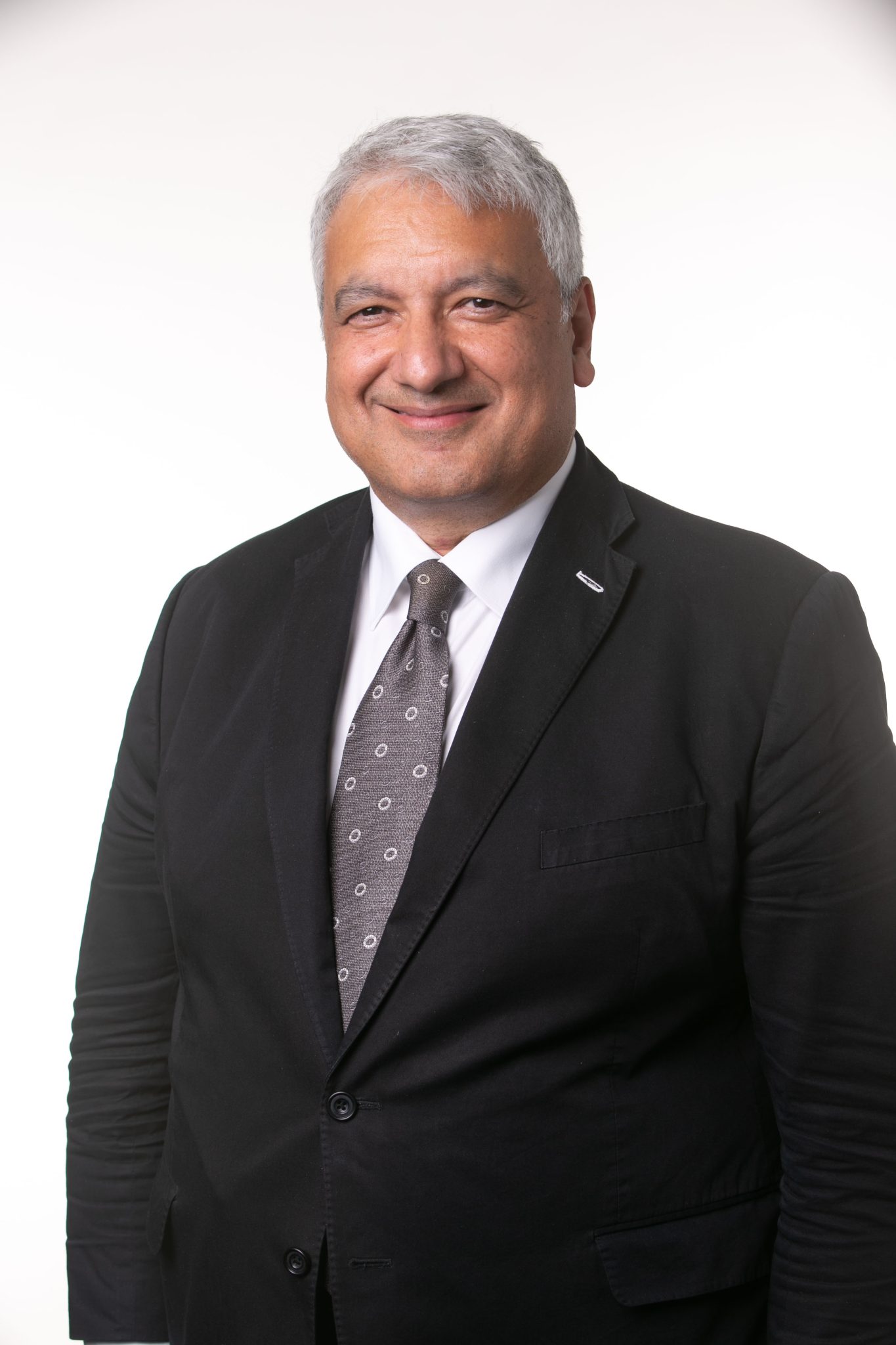Reflections on being sued under vicarious liability
News Promotional FeaturesPosted by: Dental Design 16th August 2022

Dr Raj Rattan, a member of Dental Protection and its Dental Director, was sued by a patient who had received NHS treatment carried out by associates at his former practice. Raj never treated the patient, and the treating dentists were willing to respond to the claim, but the claimant via their solicitors refused to engage with them and instead continued to pursue Dr Rattan under both vicarious liability and non-delegable duty of care. Raj shares his personal account of the claim and reflects on its impact
I have so many memories from my time as a practice owner – challenging clinical cases, many wonderful patients, business challenges, lessons learned, decisions made, opportunities taken and of course opportunities missed. Friends and colleagues with whom I worked and those who worked in neighbouring practices – never seen as competitors but always as colleagues. Little did I know that three decades of memories were about to be tarnished years after the sale of the practice.
The beginning
I received a letter from a dental negligence solicitor to advise me that they were acting on behalf of a patient in relation to some treatment received some years earlier while I was the owner of the practice. I could not recall the name and after reviewing the records it was clear that I had not ever seen or treated this patient. The claim, I assumed, needed to be redirected to the treating dentists who were made aware of the situation. I was wrong. I was targeted because I owned the practice at the time. I did what Dental Protection advise all members to do – seek help and guidance from the outset. I passed the correspondence to the team at Dental Protection and sought help as a long-standing member.
My twenty years’ dentolegal experience counted for very little because this was a case like no other. There were two components to the claim brought against me – firstly non-delegable duty of care, which focussed on my relationship with the patient and whether I as practice owner owed her a duty that was of a nature that could not be delegated.
Secondly, and a term practice owners will be more familiar with, vicarious liability. This part of the claim focussed on the relationship between me as the practice owner, and the treating clinician and whether it could be considered “akin to employment” by the Court.
While I conceded that I could be vicariously liable for the alleged negligent act(s) of the vocational trainee (he was employed as all trainees were), I contested that I could be personally liable for the negligence of the self-employed associates. In my previous role at the London Deanery, I had often lectured about the threat of vicarious liability given the relationship between the trainer and trainee; the irony was not lost on me.
It would be four years before the case would be heard in the High Court and this only added to the low-level background stress and uncertainty. This background stress is chronic; eventually it takes its toll. You soon realise what the word resilience really means and how it is tethered to time. Non-delegable duty of care and vicarious liability were the phrases I punched into Google more than any other during this time.
The preliminary issues of vicarious liability and non-delegable duty of care had previously been considered by the County Court in other cases, but this was the first time these issues had been considered by the High Court. So, mine was an important case and the stakes were high, which added to the emotional burden.
The High Court case was listed for two days. I remember looking at the dates and realising that I will have to apologise to my son for missing his birthday. I would explain that I have ‘some important work’ to attend to. He’ll be thinking nothing has changed since he was born.
In court
Surprisingly, there were no butterflies or nerves on the day of the trial. There was an ordinariness to the day which was pleasantly reassuring. I arrived early at Court – the last time I was this early for anything was my dental school interview many years ago. I sat in the coffee shop opposite for an hour so consuming my coffee with great care to avoid spillage and risk staining my shirt or tie.
My friends and colleagues were texting wishing me well and thanking me for sticking up for the profession in Court. I felt I did not deserve their plaudits because, in all honesty, given the choice I would rather have been elsewhere. Am I prepared I asked myself? I don’t know, was the answer. I knew I would be asked questions about how I operated the practice, the associate contracts, that the GDS contract would come under scrutiny, and I could be asked anything from any page in the 400-page case bundle. When in doubt tell it as it is has always been my guiding principle and that day was no different.
Let me now thank everyone for the civility shown to me. Everyone (on both sides) was very polite, respectful, and courteous during the questioning and cross-examining. The time in the witness box goes quickly – too quickly because I found myself wanting to explain in more detail, but the questioning moves apace, punctuated by moments of tension, and pauses of gentle humour. There was however no drama, and I am thankful for that.
Having been examined, cross examined and re-examined, I sat in silence for the rest of the two-day trial and could now focus on the legal debate as the barristers argued their case. There are moments when you are tempted to raise your hand to seek permission to interject – that simply cannot happen, but the temptation is nevertheless there! You have to remind yourself that you are not there to present your case – that is their job.
Impact
I realise that my anxiety about this entire case is as much about the ruling itself as it is about how it is reported in the media. We live in a world where brevity rules. The headline is not just a headline – the headline is the story. I was concerned about what conclusions or inferences would be drawn from just the headlines. I discussed this at some length with the press team at Dental Protection who had planned for all eventualities. Nothing was left to chance – preparedness was the order of the day and that gave me some peace of mind.
What really kept me going was the support from the Dental Protection team, friends, and colleagues in the profession – ‘rather you than me’ was a phrase I heard a lot.
The judgment
The High Court judge made clear that my conduct as a practice owner was not being criticised in any way. This was hugely reassuring because I was passionate about general practice and cared a great deal about how we operated the practice. However, the Court ruled that I was indeed vicariously liable for the self-employed associate dentists working at my former practice, and that I owed the patient a non-delegable duty of care when she attended my practice for dental treatment. A disappointing but not disheartening result, and after discussion with the Dental Protection defence team, an appeal was lodged. We had come this far. Fighting this had become a matter of principle given the potential repercussions for the profession.
In February this year the Court of Appeal ruled that I was not vicariously liable for the actions of the associates concerned because of the freedoms they had in my practice. This was pleasing news however as the finding was specific to my case, the judgment does not set a precedent for all other vicarious liability claims. It adds only to the accretions of existing case law.
With regards to non-delegable duty of care, the appeal judges unfortunately agreed with the High Court that the claimant had been placed in my care as a patient of the practice, and as such I had a positive non-delegable duty to protect her from harm caused by dental treatment. The judges took into consideration the patient’s own perception that she was a patient of the practice rather than the individual dentists who treated her. The personal dental treatment plan form used in England and Wales (FP17DC) was significant in relation to this point, as this named me as the dentist providing her treatment. Furthermore, the patient had not received any other documentation naming the individual dentists, and it was identified that patients were described as ‘patients of the practice’ under the associates’ agreement.
Where to next?
Last year, Dental Protection extended its benefits for eligible practice principal members to include additional protection against claims relating to treatment provided by self-employed, contracted associates. Despite this reassurance however, I can say firsthand that experiencing a vicarious liability or non-delegable duty of care claim can still be emotionally draining, frustrating and it is at best an unnecessary inconvenience.
In the longer term, these claims may also lead to practice owners having to pay higher indemnity costs to reflect the increased risk that these claims expose a practice to.
In my case, as in many others, I was particularly frustrated given that the treating dentists were willing to respond to the claim from the outset, but it was decided to pursue me as the practice owner. I reflect on how long this has all taken and question whether the patient’s best interests have been served. Whilst I understand that it is sometimes necessary to seek clarity and certainty through the Courts, it is also important that we (all of us) look after patients and work in their best interest even and especially when things may have gone wrong.
Members tell us at Dental Protection that they are keen to know what other steps they can take to protect themselves should a claim be brought against them. In July, we set out some practical guidance which, based on facts that were significant in my case, may help practice owners reduce the chance of a vicarious liability or non-delegable duty of care claim against them being successful.
I would urge practice owners to review this guidance – it is a five-minute read. Some of the steps set out may seem small or administrative but may just ensure a claim does not progress. If taking the time to make these changes avoids a protracted and stressful litigation process, it has to be worth it.
About the Author

Dr Raj Rattan
Raj Rattan MBE BDS FCGDent. Dip.MDE FICD FFLM
Raj Rattan is Dental Director at Dental Protection. His portfolio career includes over 30 years’ clinical experience in general dental practice. He owned and operated a small practice group and was involved in dental foundation training for over 20 years first as a programme director and then Strategic Association Dean at the London Deanery. He has been an examiner for the FGDP and currently for the Faculty of Forensic and Legal Medicine. He is the author/co-author of a number of textbooks, has contributed articles to dental publications for more than 25 years and has lectured extensively throughout the UK and internationally for many years.









